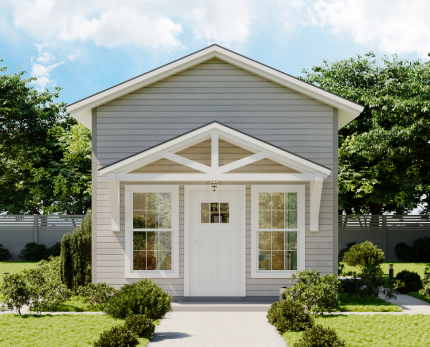As the popularity of carriage homes, also known as Accessory Dwelling Units (ADUs), continues to grow, navigating the complex regulatory landscape surrounding these structures has become increasingly important for homeowners and policymakers alike. From zoning ordinances to building codes, a myriad of legal considerations must be addressed to ensure compliance and successful implementation. In this article, we’ll explore the regulatory challenges associated with carriage homes and provide insights into navigating the legal landscape effectively.
Understanding Zoning and Land Use Regulations
Zoning ordinances dictate where and how carriage homes can be built within a given jurisdiction, making them a critical consideration for homeowners interested in constructing these structures. Some areas have specific zoning designations for ADUs, while others may require special permits or variances for construction. Understanding the zoning regulations in your area is essential for determining the feasibility and requirements of building a carriage home on your property.
Navigating Zoning Designations
Zoning designations typically dictate the size, placement, and occupancy of carriage homes within a specific zone. In some cases, carriage homes may be allowed as-of-right in certain zoning districts, meaning homeowners can build them without the need for additional approvals. In other cases, special permits or variances may be required, particularly in areas with more restrictive zoning regulations. Working with by local planning departments and zoning officials can help clarify the zoning requirements and procedures for building a carriage home.
Addressing Building Codes and Permitting Requirements
In addition to zoning regulations, carriage homes must comply with building codes and permitting requirements to ensure structural safety and code compliance. Building codes dictate the minimum standards for construction, including structural integrity, fire safety, plumbing, electrical systems, and accessibility features. Obtaining the necessary permits and inspections is essential for ensuring that carriage homes are built to code and meet all legal requirements.
Ensuring Code Compliance
Complying with building codes requires careful planning and coordination throughout the design and construction process. Hiring qualified architects, engineers, and contractors who are familiar with local building codes and regulations is essential for ensuring that carriage homes meet all structural and safety requirements. Additionally, homeowners should be prepared to submit detailed plans and documentation to local building departments and obtain permits before beginning construction.
Overcoming Regulatory Hurdles
Navigating the regulatory hurdles associated with carriage homes can be challenging, but there are strategies for overcoming these obstacles effectively. Engaging with local policymakers, community stakeholders, and advocacy groups can help raise awareness of the benefits of carriage homes and advocate for supportive policies and regulations. Additionally, seeking professional guidance from architects, attorneys, and consultants who specialize in ADU development can provide valuable insights and assistance in navigating the regulatory process.
Advocating for Policy Reform
In some cases, regulatory barriers may hinder the development of carriage homes, preventing homeowners from realizing the full potential of these structures. Advocating for policy reform and regulatory changes that support the development of ADUs can help streamline the permitting process, reduce barriers to construction, and promote greater access to affordable housing options. By working collaboratively with policymakers and community stakeholders, homeowners can help shape the regulatory landscape in a way that facilitates the development of carriage homes and promotes sustainable, inclusive communities.
Conclusion
Navigating the regulatory challenges associated with carriage homes requires careful consideration of zoning ordinances, building codes, and permitting requirements. By understanding the legal landscape and engaging with local officials and stakeholders, homeowners can overcome regulatory hurdles and successfully develop carriage homes that meet their needs and preferences. Additionally, advocating for policy reform and regulatory changes can help promote greater access to ADUs and support the development of sustainable, inclusive communities for the future.


